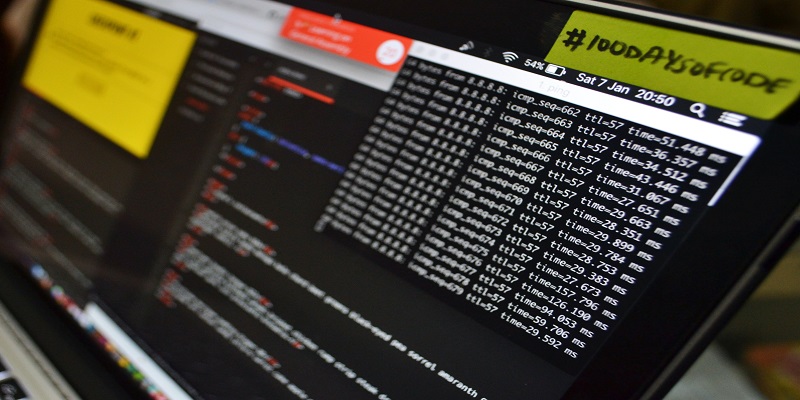Cyber Security
The Evolution of Cyber Threats: Understanding the Latest Trends in Cyber Security

In today’s digital landscape, where technology reigns supreme, cyber threats have become increasingly sophisticated and relentless. From malware attacks to data breaches, the world of cyber security is constantly evolving to counter these ever-present dangers. In this blog post, we delve into the fascinating journey of cyber threats – tracing their evolution from simple viruses to complex targeted attacks.
Introduction to Cyber Security
Cyber security is the practice of protecting electronic information from unauthorized access or destruction. It includes both hardware and software technologies, as well as procedural methods and organizational measures. Cyber security has become increasingly important as the internet and other computer networks have become integral to daily life and business operations.
The term “cyber security” encompasses a wide range of activities, from ensuring the confidentiality of customer data to preventing denial-of-service attacks. The common goal of all cyber security efforts is to protect information from unauthorized access or manipulation.
There are many different types of cyber threats, ranging from viruses and malware to phishing scams and identity theft. Cyber criminals are constantly finding new ways to exploit vulnerabilities in computer systems, so it’s important to stay up-to-date on the latest trends in cyber security.
One of the most serious cyber threats today is ransomware. Ransomware is a type of malicious software that encrypts a victim’s files and demands a ransom be paid in order to decrypt them. This can be a devastating attack for businesses, as it can result in loss of critical data and interrupts business operations.
Another emerging threat is IoT devices being hacked and used for DDoS attacks. IoT devices are becoming more common in homes and businesses, but they often lack adequate security measures. This makes them easy targets for hackers, who can then use them to launch large-scale DDoS attacks.
Different Types of Cyber Threats
There are many different types of cyber threats that organizations face today. Some of the most common include:
Malware: Malicious software, or malware, is any software designed to harm a computer or network. This can include viruses, worms, Trojan horses, and spyware.
Phishing: Phishing is a type of online fraud that involves sending bogus emails that appear to be from a legitimate source in an attempt to trick victims into revealing sensitive information such as passwords or credit card numbers.
Denial-of-service (DoS) attacks: A DoS attack occurs when a hacker overwheltical engine 1876 other computers used for business purposes 1907 UK Times H becomes overloaded with requests, preventing legitimate users from accessing a system or website. This can happen through malicious traffic flooding the network or server hosting the target site.
SQL injection: SQL injection is a type of code injection tactic that exploits vulnerabilities in web applications that use Structured Query Language (SQL). This allows attackers to insert malicious code into SQL queries, which can then be executed by the database server.
Man-in-the-middle attacks (MitM): In a MitM attack, cybercriminals intercept communication between two parties in order to access sensitive information or inject malware. This can happen either through physical means, such as being on the same Wi-Fi network as the victim, or by using tools like DNS spoofing to redirect traffic to a malicious server.
How Organizations Can Prepare for Cyber Attacks
In the ever-changing landscape of cyber security, it is important for organizations to stay up-to-date on the latest threats. Here are some tips on how organizations can prepare for cyber attacks:
- Educate employees on cyber security risks and best practices. Employees should be aware of the risks of clicking on links or attachments from unknown sources, as well as the importance of keeping passwords secure.
- Implement strong cyber security measures. This includes things like firewalls, intrusion detection and prevention systems, and encryption.
- Develop a plan for responding to a cyber attack. This plan should include who to contact, what steps to take, and how to minimize damage.
- Regularly backup data and critical systems. In the event of an attack, this will help ensure that essential information can be recovered quickly.
- Stay up-to-date on the latest cyber threats and trends. This way you can be prepared for whatever comes your way.

Best Practices for Protecting Company Data
There are a number of best practices for protecting company data from cyber threats, including
- Implementing robust security measures: This includes both technical measures (e.g. firewalls and intrusion detection/prevention systems) and non-technical measures (e.g. employee awareness training and policy development).
- Keeping up to date with the latest security trends: This allows you to identify new threats and vulnerabilities early, and take steps to mitigate them before they can be exploited.
- Conducting regular risk assessments: This helps you understand where your company’s data is most at risk, and what steps need to be taken to protect it.
- Responding quickly and effectively to incidents: This minimises the damage caused by a security breach, and reduces the likelihood of it happening again in future.
Emerging Trends in Cyber Security
In recent years, the cyber security landscape has shifted dramatically. With the rise of sophisticated cyber-attacks, organizations are struggling to keep pace with the latest threats.
One of the biggest trends in cyber security is the move away from traditional perimeter-based security models. With the growth of cloud computing and mobile devices, it’s become increasingly difficult to protect data within a traditional network perimeter. As a result, many organizations are adopting a more holistic approach to security that includes both on-premises and off-premises solutions.
Another major trend is the increasing use of artificial intelligence (AI) and machine learning for security purposes. These technologies can be used to detect and block malicious activity, as well as Automated Cyber Threat Intelligence Gathering and Analysis (ACTIA) systems which can predict future threats based on past patterns.
Organizations are also struggling with an influx of data breaches. In response, they’re turning to breach detection and response solutions that can help them identify and mitigate incidents quickly.
Cybersecurity budgets are expected to continue to increase in the coming years. With the cost of data breaches on the rise, businesses are investing more in prevention and detection solutions. This is especially true for small businesses, which are often targets for cyber attacks due to their lack of resources.
Tools and Techniques to Help Mitigate Cyber Threats
There are a number of tools and techniques that can help mitigate cyber threats. These include:
- Firewalls: Firewalls can be used to block incoming traffic from known or suspected malicious sources.
- Intrusion detection and prevention systems: These systems can detect and prevent attempts to access networks or systems.
- Anti-malware software: This software can detect and remove malware from systems.
- Patch management: Keeping systems up-to-date with the latest security patches can help prevent vulnerabilities from being exploited by attackers.
- User education and training: Educating users on cybersecurity risks and best practices can help them avoid accidentally clicking on malicious links or opening attachments from unknown senders.
Analyzing the Future of Cyber Security
As we head into a new decade, it’s important to reflect on the past and present of cybersecurity in order to better prepare for the future. Cybersecurity threats are constantly evolving, and it can be difficult to stay one step ahead of the latest trends. However, by understanding the latest trends and keeping up with the latest information, we can help ensure that our businesses and personal data are as safe as possible from future attacks.
One of the biggest trends in cybersecurity is the rise of artificial intelligence (AI). AI is being used more and more to automate various tasks, including security tasks. However, this also means that AI is being used more and more by hackers to launch sophisticated attacks. In order to stay ahead of these attacks, businesses need to invest in AI-powered security solutions.
Another big trend is the increasing use of cloud services. Cloud services offer many benefits, but they also introduce new risks. Hackers are increasingly targeting cloud-based systems in order to gain access to sensitive data. To combat these threats, businesses need to implement strong security measures for their cloud-based systems.
Another major trend that is impacting cybersecurity is the growth of the Internet of Things (IoT). The IoT refers to devices that are connected to the internet, such as smart thermostats, home security cameras, and wearable devices. These devices make our lives easier but they also create new opportunities for hackers to gain access to our data. To protect ourselves from these
Conclusion
It is clear from this article that cyber threats are constantly evolving and becoming more complex. We have seen how the latest trends in cybersecurity can help protect us against these threats, but it is vital that organizations stay ahead of the game by regularly assessing potential risks and making sure they remain up-to-date on emerging technologies. Having a strong cybersecurity strategy in place will enable businesses to protect their assets, customers’ data, and maintain trust with their audiences. Ultimately, understanding the latest trends in cyber security will be key for all companies as we move forward together into an increasingly digital world.


































